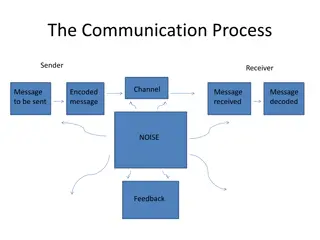Understanding Movements in Graphs: Describing Trends Upward and Downward
Learn to describe and interpret graphs showing upward and downward movements using verbs, nouns, and prepositions. Explore expressions for dramatic changes, stability, and fluctuations in data. Understand how movements in graphs are depicted through various adjectives and adverbs.
Uploaded on Sep 16, 2024 | 0 Views
Download Presentation

Please find below an Image/Link to download the presentation.
The content on the website is provided AS IS for your information and personal use only. It may not be sold, licensed, or shared on other websites without obtaining consent from the author. Download presentation by click this link. If you encounter any issues during the download, it is possible that the publisher has removed the file from their server.
E N D
Presentation Transcript
EBS 2 - P 56 Describing and Describing and interpreting interpreting graphs graphs
1 1 Verbs of movement Verbs of movement
Describing Describing downward downward movements movements Noun a decline a decrease a fall a drop a downturn Verb decline decrease fall drop go down - went down Preposition OF + quantity/ amount of change IN + something - declined - decreased - fell - dropped
Describing dramatic downward Describing dramatic downward movements movements Verb plunge plummet slump slumped Noun a plunge a slump Verb plunged plummeted Verb reached a low point of hit a record/an all-time low of bottomed out at ...
Describing upward Describing upward movements movements - -1 1 Verb rise increase grow go up an upturn went up Verb rose increased grew Noun a rise an increase a growth by oil prices increased ........ $3 of in an increase ......... $3 ...... oil prices
Describing dramatic Describing dramatic upward movements upward movements Verb rocketed soared shot up Noun
Describing upward Describing upward movements movements - - 2 2 4 6 2 2 doubled (in value) tripled (in value) peaked at (an amount) reached a peak a record high an all-time high OF + amount
Describing no change Describing no change remained / stayed stable/steady/constant levelled off (at) stop moving up or down X stood at stand at used to indicate a point in a graph
Other expressions of Other expressions of movement movement recovered recovery fluctuated fluctuations
2 2 Adjectives and Adjectives and adverbs adverbs
Describing degree of change Describing degree of change 1. dramatic(ally) / sharp(ly) 2. significant(ly) considerable/considerably 3.moderate(ly) 4. modest(ly) slight(ly)
Describing speed of change Describing speed of change 1. rapid(ly) 2. constant(ly) steady/steadily 3. gradual(ly) 4. slow(ly)
Transform the sentences in your book. verb + adverb adjective + noun 1. Prices rose sharply. There was a sharp rise in prices. 2. There was a moderate decrease in production. Production decreased moderately. 3. Our profits have risen dramatically over the last few months. There has been a dramatic rise in our profits over the last few months.
3 3 Prepositions Prepositions
Indicating the difference. Last year sales increased ____ 5%. There was an increase ____ 5% ____ sales. Or There was a 5% increase ... by of in Indicating the final result. Turnover rose ________$2.7m ____ $3m. There was a $3m (three-million-dollar) rise ____ turnover. from to in
verb vs noun to indicate movement: to level off ____ to bottom out ____ // to reach a low point ___ to stand ___ to peak ____// to reach a peak ___ at at at of at of
Prepositions with time expressions Match the prepositions with the expressions they can be used with. a. the end of January b. 1988/1992 c. 1988 d. March e. Thursday f. 24 May g. 8 a.m. h. the beginning of 1999 1. from --- to --- 2. between --- and --- 3. during --- 4. in --- 5. on --- 6. at ---























